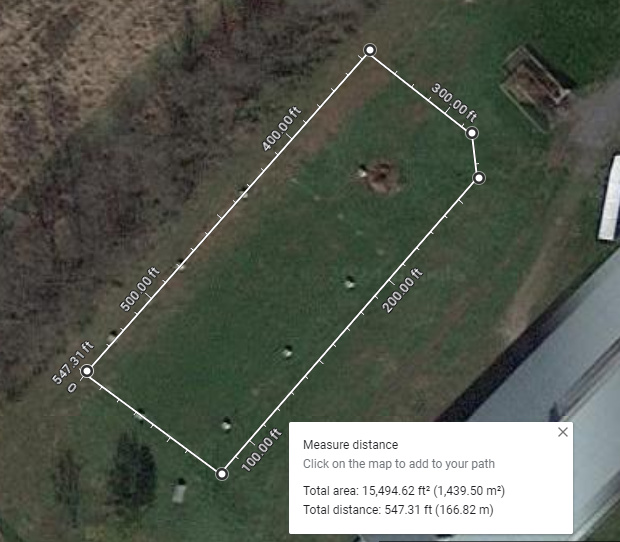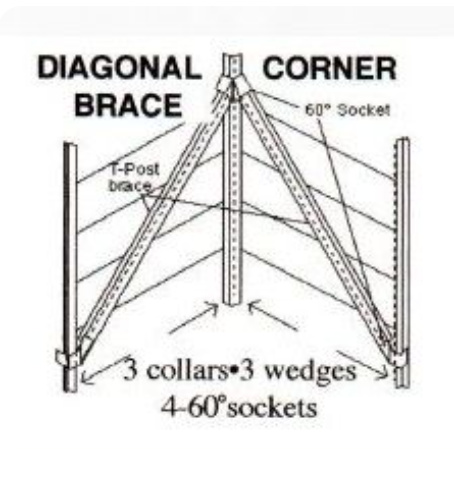After spending a combined 6.5 months in the last year on stall rest/small pen turnout due to not backing down from fights, we have banned Pony from group turnout, but the boarding farm isn’t set up for that. Currently, she’s in a small convalescent pen, but the BO has given us permission to set up a small paddock on a well-established grass elsewhere on the property. There would be no shared fencelines but in view of other horses. Eventually (I’d estimate at least 2 years away), the BO will set up permanent wood post-and-braid fencing in the same general area, but thanks to Pony loving to find ways to give me ulcers, I want to plan out this temporary fencing right. So my question for you all is, how necessary are wooden posts at the corners and gate for a fence-respecting horse?
The current plan is as follows: Fence with (capped! tall!) T-posts every 12 or 14’ with three strands of bi-polar horseguard tape starting at 20" high. The gate (diagonal section)is currently going to be a three-strand tape gate. It would be on pretty much level ground with a slight decline towards the gate.
(ignore the features inside the proposed fenceline, those are long gone)


